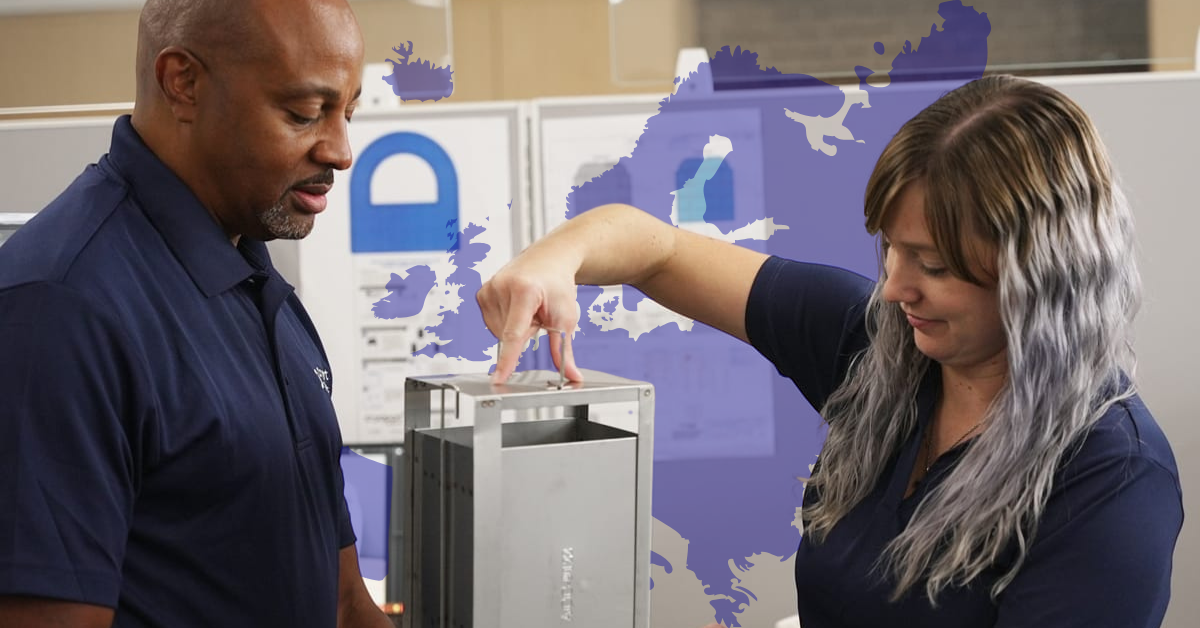ATMP Development in 2025: Promise, Pressure, and the Push to Scale
As the advanced therapy medicinal products (ATMP) sector reaches the midpoint of 2025, there’s no shortage of scientific momentum. Groundbreaking CRISPR-based therapies are making headlines. Patient access to cell and gene therapies is expanding beyond early adopter markets. And a maturing global regulatory environment is slowly but surely creating new opportunities for commercialization. But alongside this promise comes pressure.
In her recent conversation with Beyond Biotech, the podcast by Labiotech, Cryoport Systems’ Vice President of Business Development for EMEA, Alison Pritchard, offered a candid look at where the industry stands today, and what it will take to scale the next wave of therapeutic innovation.
“I think 2025 so far is really highlighting the therapeutic impact and the promise of cell and gene therapies,” Alison said. “We’re seeing more patients than ever actually gaining access to these treatments.”
It’s a meaningful shift. But as Alison discussed, that progress hasn’t come without complexity. From a more constrained funding environment to persistent operational inefficiencies, therapy developers are being forced to do more with less, and to do it faster, with fewer missteps.
A Year of Contrasts: Scientific Breakthroughs vs. Systemic Strain
Alison pointed to recent advances in CRISPR-based therapies as a sign of just how far the field has come. But she was quick to note that the pressures on developers are mounting just as quickly.
“We are seeing groundbreaking milestones… but I think it’s fair to say that the industry is contending in a much more constrained funding environment,” she explained. “We’re seeing shifts in global regulatory dynamics and we’re still seeing some persistent challenges around standardization, scalability, and access.”
This confluence of breakthroughs and bottlenecks is reshaping the way biotech companies approach every phase of therapy development, from clinical trial design to commercial launch. For Alison, the central tension of 2025 lies in balancing innovation with infrastructure.
“It’s the pace of approvals and of innovation, and the need to expand patient access, paired with building sustainable infrastructure and operations that can then support the long-term, scalable delivery of these therapies,” she noted.
The Access Gap Remains
While therapy approvals are on the rise, the reality is that most patients who could benefit still aren’t being reached.
“As an industry, we’re now manufacturing tens of thousands of doses annually, and that’s wonderful. But, we’re only reaching around 20% of the eligible patient population across the U.S. and Europe,” Alison said.
Access is shaped by many interrelated factors, like the cost of goods, reimbursement hurdles, cold chain logistics, treatment scheduling, and even the physical proximity of patients to qualified clinical sites. In short, scientific innovation has outpaced the infrastructure required to deliver it at scale.
“Clinical innovation is accelerating. But the infrastructure to deliver that innovation is lagging,” Alison pointed out.
Scalability Must Be Designed In, Not Bolted On
One clear takeaway from Alison’s interview is that scalability cannot be an afterthought.
Early-stage developers, particularly those in the autologous therapy space, are grappling with enormous complexity at relatively low volumes. But as these therapies move into later-stage trials and commercialization, that complexity grows exponentially. Without a plan to scale, companies risk stalled launches and missed patients.
“You’re not just managing logistics, you’re having to synchronize with a patient’s clinic appointment, coordinate apheresis, manufacturing, and then return the therapy in time for reinfusion,” Alison noted. “Every link in that chain has to be really tightly coordinated.”
And that coordination must happen across geographic, regulatory, and technical boundaries.
The Role of Strategic Supply Chain Partners
The need for end-to-end integration has never been clearer. More than straightforward logistics support, developers need regulatory guidance, GMP biostorage, qualified person (QP) release capabilities, continuous condition monitoring, cryopreservation services, and more. That’s where Cryoport Systems comes in.
“We’re no longer just movers of material. You have to be integrated partners in the therapy lifecycle,” Alison said. “The supply chain becomes a strategic driver of success to make sure that we’re ultimately protecting the promise of the therapy.”
Cryoport Systems’ role is more than reactive, it’s collaborative and anticipatory. From facility buildouts in strategic hubs like Paris to cryopreservation standardization platforms like IntegriCell™, Cryoport Systems is investing in infrastructure and partnerships that allow biotechs to scale confidently.
“The ultimate success in cell and gene therapy is only measured by one thing: how many patients benefit from it,” Alison said. “That’s the goal. That’s the North Star the industry is working toward.”
Reaching that goal will require not just cutting-edge science, but systems built for scale, partners prepared to act with urgency and flexibility, and a commitment to building patient-centered supply chains now, not later.
“Every link in the chain enables the patient’s outcome,” Alison emphasized. “When we recognize that, we design better systems, resilient systems, agile networks, and more patient-centered strategies. Not just to meet today’s demand, but to scale for the future.”
Listen to Alison’s full interview on the Beyond Biotech podcast here.


